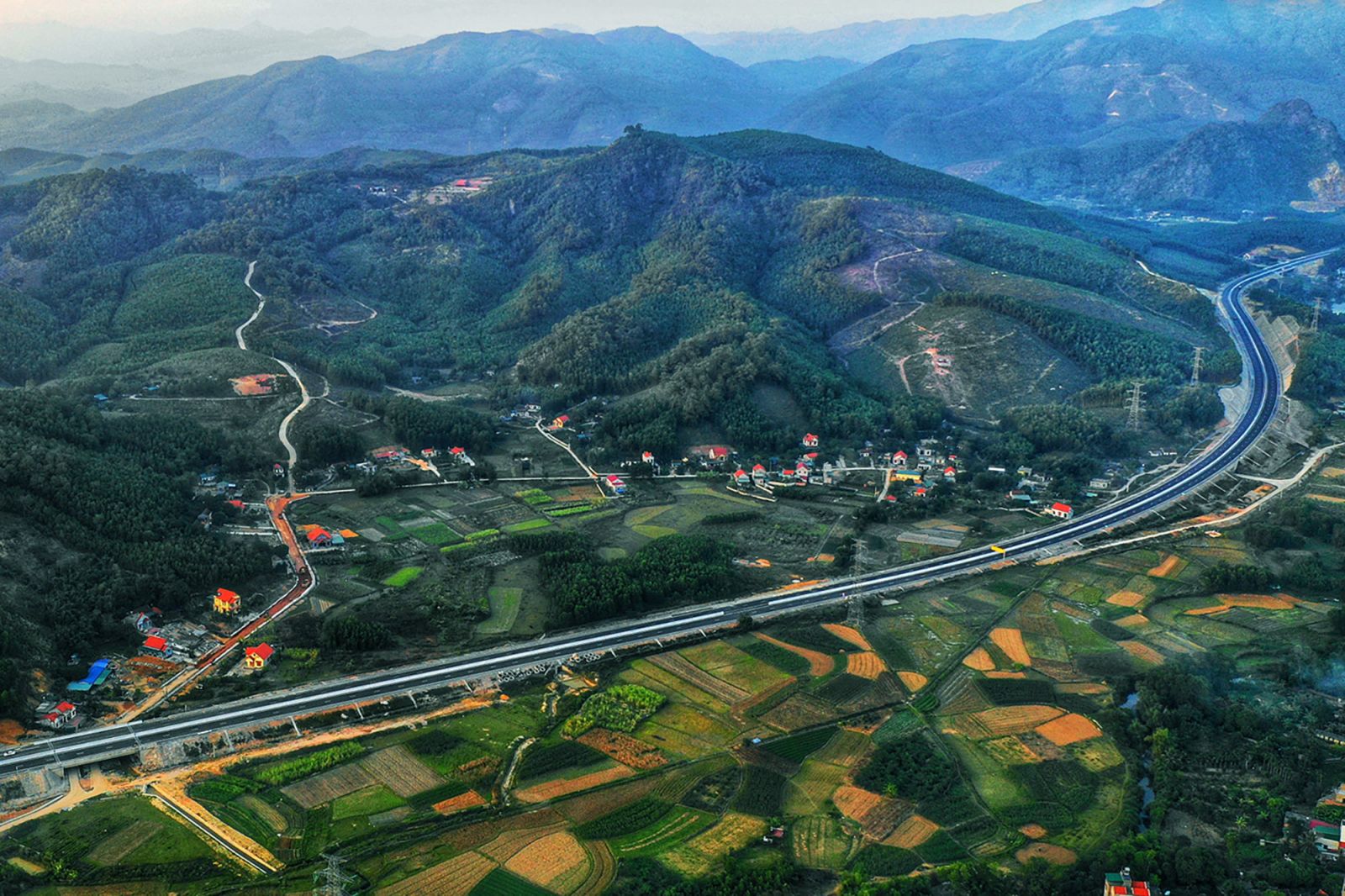Accordingly, the land will be handed over to the Van Don Infrastructure Investment and Development Limited Liability Company – the investor of the project, said Vu Van Hop, Chief of the Office of National Assembly delegation, the Quang Ninh People’s Council and People’s Committee.
The 80.2-km highway is designed with four lanes and a maximum speed of 100 kilometres per hour for vehicles, running through Van Don, Tien Yen, Dam Ha and Hai Ha districts and Mong Cai city, with total investment of more than VND11.1 trillion ($477.3 million).
Work on the route began in April 2019, but earlier in March 2018, Quang Ninh had begun land clearance, aiming to clear nearly 527 hectares of land. A total of 326 households and 320 tombs had to be relocated to make way for the road.
The total land clearance cost was around VND1.5 trillion ($64.5 million) sourced from the province’s corresponding capital.

Hop said the compensation for land clearance was implemented publicly and transparently in accordance with relevant procedures and laws.
The Van Don – Mong Cai highway was invested under the public-private-partnership (PPP) and Build-Operate-Transfer (BOT) forms.
Once completed, it will connect with the Hai Phong-Ha Long and Ha Long-Van Don highways, creating the longest highway in Vietnam that runs from the northwestern province of Lao Cai to Mong Cai via Hanoi and northern port city of Hai Phong.
Additionally, the Van Don – Mong Cai highway will serve as an important transport gateway linking Vietnam and China and countries in the Association of Southeast Asian Nations (ASEAN), helping connect Vietnamese northern localities with ASEAN and China, thus creating a momentum to bolster regional connectivity.
It will also create a complete “backbone” with a total length of nearly 200km, making it easier for the attraction of investment to promote marine economy, socio-economic development, tourism and international trade through Mong Cai border gate.
The early completion of land clearance helped speed up the implementation of the project, which is scheduled to be put into operation in 2021.
Besides, the completion of the Van Don – Mong Cai highway is also expected to facilitate access to the Van Don international airport, which was put into operation in December 2018.
The airport is expected to help Quang Ninh achieve its target of welcoming 15-16 million tourists, including 7 million foreigners, by 2020 and 30 million arrivals, including 15 million foreigners, by 2030. Therefore, local authorities have been offering many incentives to promote the launch of flights to the airport, the first of its kind invested by a private business in Vietnam.
The Ha Long-Hai Phong Expressway was put into service in September 2018, while the Ha Long-Van Don Expressway became operational in December the same year.
Apart from transport infrastructure, the Northern province has also revised plans for local ports and wharves serving coal transport, thus abolishing small-scale coal wharves and storage sites along the coast of Cua Luc and Ha Long Bays as well as in Cam Pha, Dong Trieu, Uong Bi and Hoanh Bo. New specialized roads have been built for coal transport, while new modes of transport such as railway and conveyor belts are being introduced to reduce pollution.
Quang Ninh also ended the transport of cement and clinker on Ha Long Bay, and relocated residents in floating fishing villages in the bay to new homes in Ha Phong ward, Ha Long city, thus improving the environment in the bay, which was twice recognised by UNESCO as a world natural heritage site in 1994 and 2000.

















